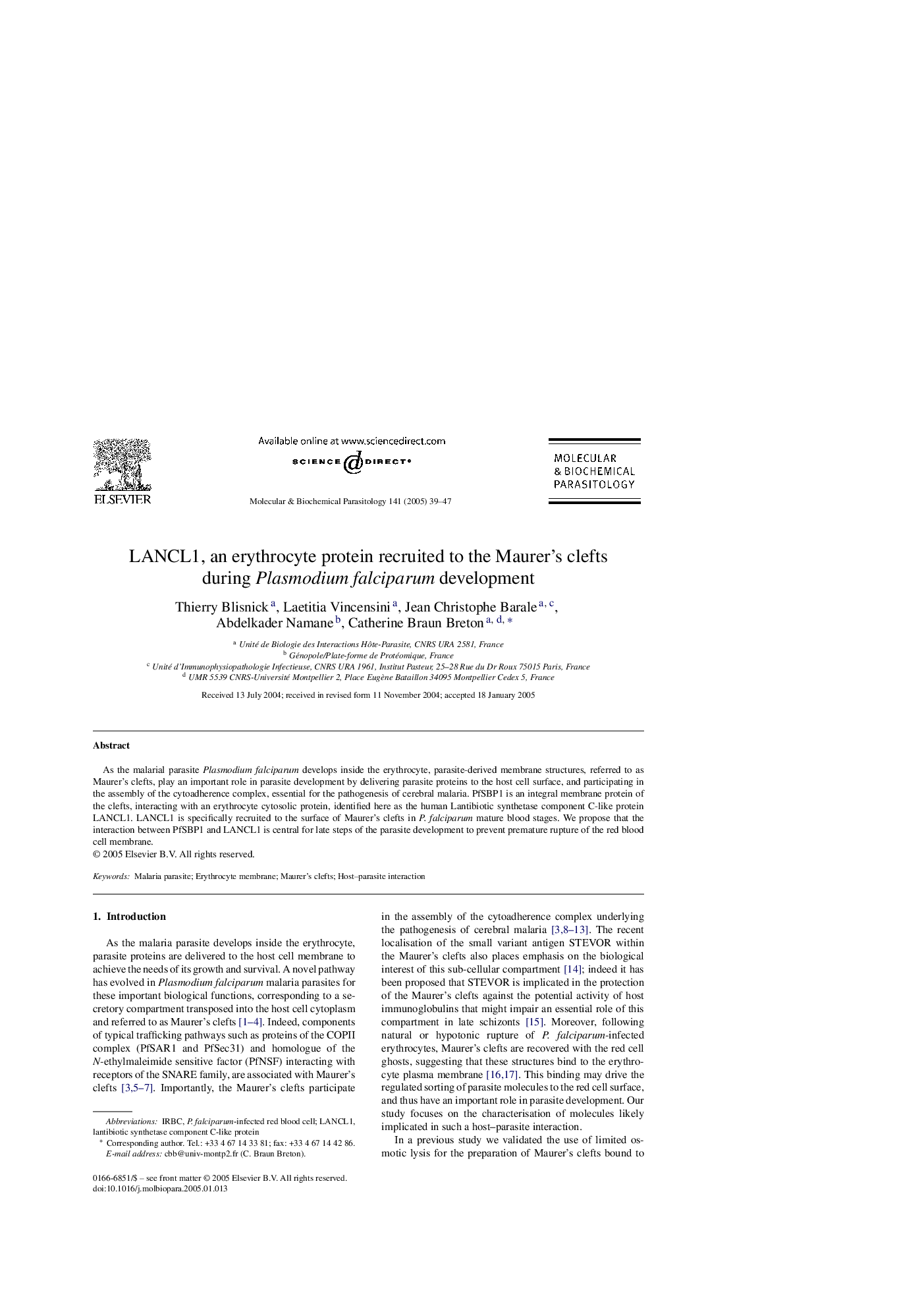| Article ID | Journal | Published Year | Pages | File Type |
|---|---|---|---|---|
| 9140067 | Molecular and Biochemical Parasitology | 2005 | 9 Pages |
Abstract
As the malarial parasite Plasmodium falciparum develops inside the erythrocyte, parasite-derived membrane structures, referred to as Maurer's clefts, play an important role in parasite development by delivering parasite proteins to the host cell surface, and participating in the assembly of the cytoadherence complex, essential for the pathogenesis of cerebral malaria. PfSBP1 is an integral membrane protein of the clefts, interacting with an erythrocyte cytosolic protein, identified here as the human Lantibiotic synthetase component C-like protein LANCL1. LANCL1 is specifically recruited to the surface of Maurer's clefts in P. falciparum mature blood stages. We propose that the interaction between PfSBP1 and LANCL1 is central for late steps of the parasite development to prevent premature rupture of the red blood cell membrane.
Related Topics
Life Sciences
Biochemistry, Genetics and Molecular Biology
Molecular Biology
Authors
Thierry Blisnick, Laetitia Vincensini, Jean Christophe Barale, Abdelkader Namane, Catherine Braun Breton,
